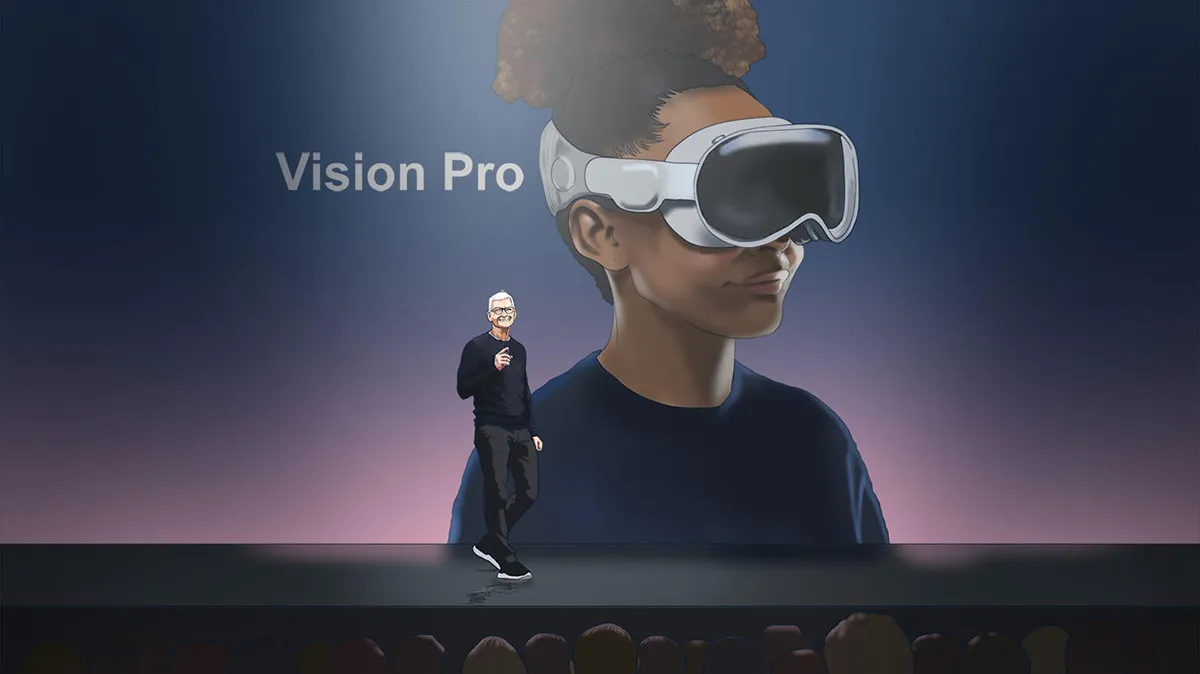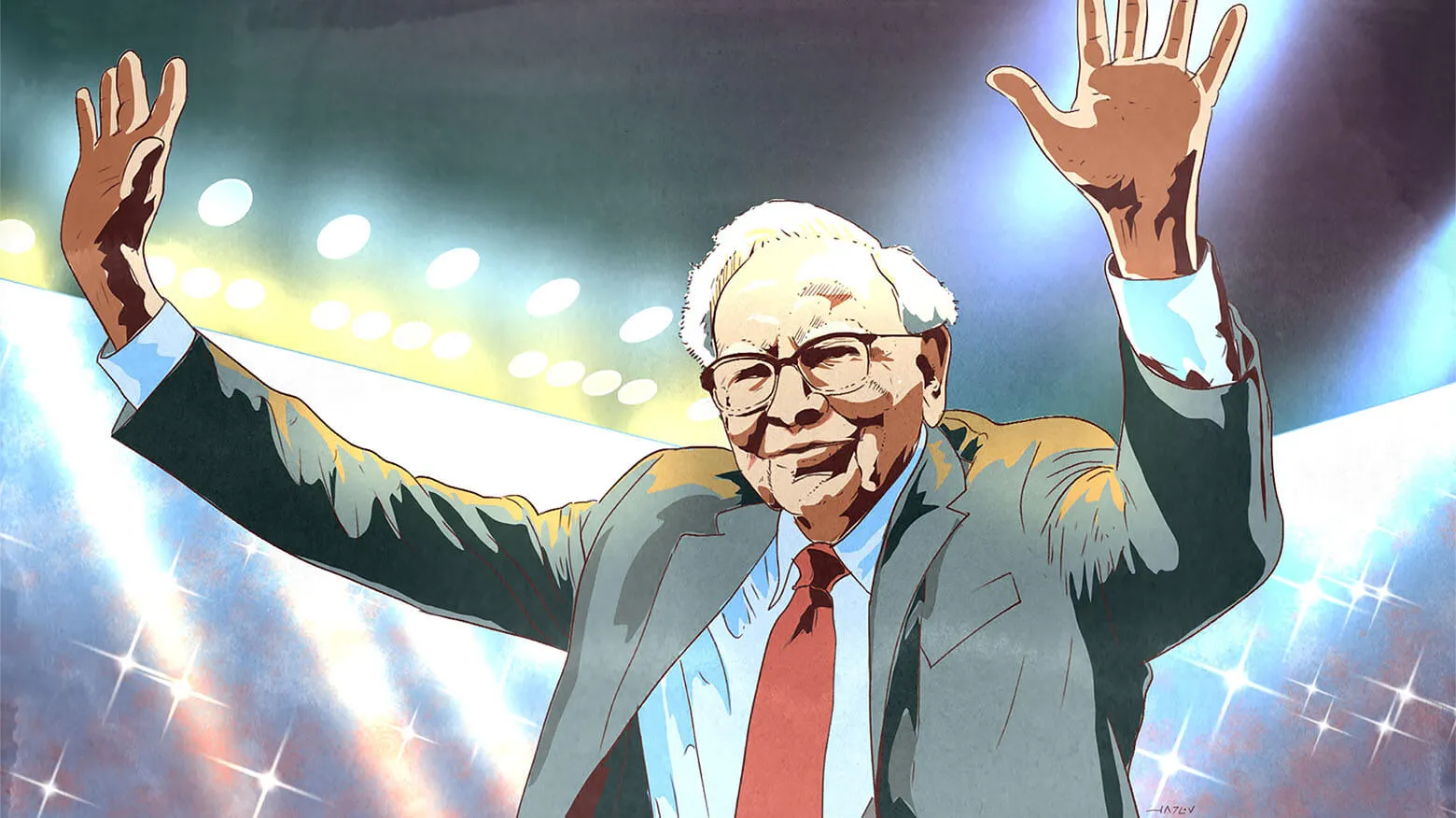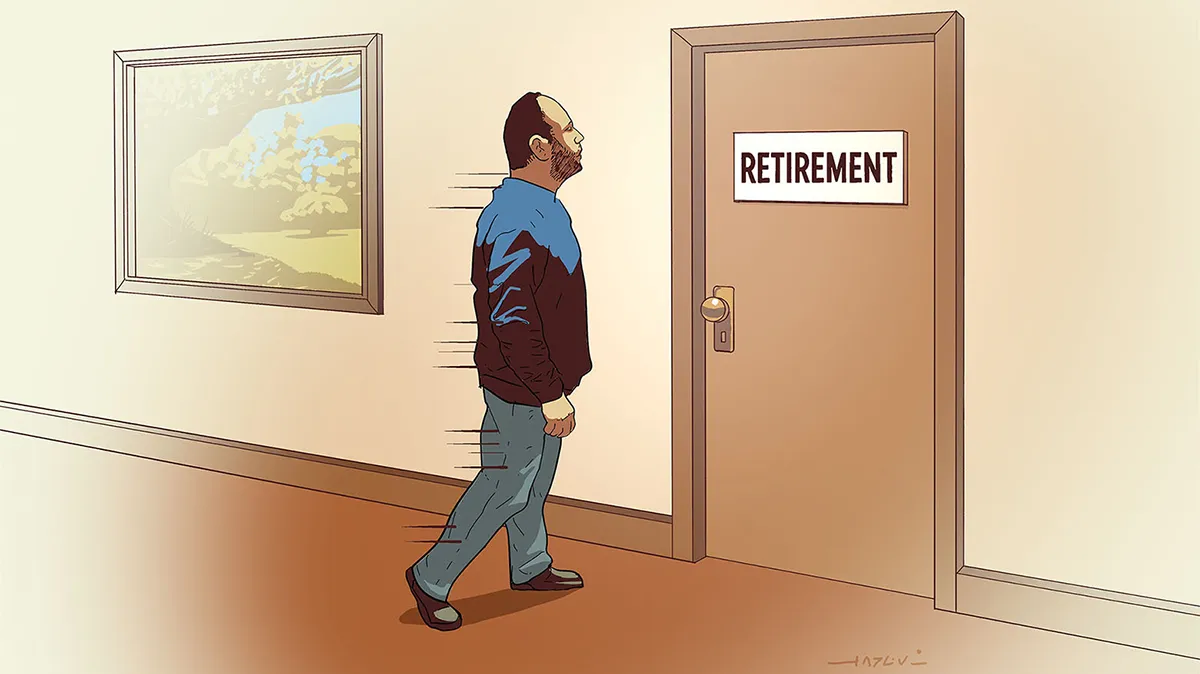I have read reviews of Vision Pro, Apple’s virtual reality headset. While I was watching Apple’s presentation, Meta’s Quest Pro (which I own for research purposes) suddenly started to remind me of Microsoft PCs – made by engineers for engineers, where the Vision Pro is created by humans for humans.
Two features about the product stand out. (I’d like to warn you that these are incomplete, somewhat random thoughts about Apple the company, not $AAPL the stock – they are related but different things.)
First, the Vision Pro is both virtual and augmented reality. It allows you to be totally engrossed in the virtual world (the VR part), but Apple went out of its way to also allow you to interact with the real world – people – while you have the headset on (the AR part). In other words, if I am wearing my headset and my wife comes into the room with a question, my virtual world can interface with the real world – I can see my wife and talk to her as I pause my movie or continue talking to her while working on my wall sized spreadsheet, virtually projected between my couch and coffee table.
Vision Pro is not a see-through device that looks like a ski mask. There is plastic and a lot of electronics standing between you and the outside world. This headset has 12 inward- and outward-looking cameras that capture the movements of your eyes and the world around you. This is the genius of Apple. It added a curved screen that displays your eyes (captured by the internal cameras). This screen makes the device look like a see-through unit. Thus, when your spouse is talking to you, she feels like she is seeing your eyes, though she is looking at the display of your eyes.
The augmentation of the digital and physical worlds is going to change how we interact with the real world. I have read that Apple is working on virtual reality cameras that will be used to film sports. I recently became a basketball fan (just for a few weeks while the Denver Nuggets are in the finals); and I can just imagine watching the game with friends, all of us wearing the Vision Pro, as if we were sitting courtside or, even better, on the court, and still conversing as we drank beer and ate junk food (this is why basketball is only an obsession for three weeks).
Meta’s Quest Pro, which only has VR, no AR, makes this device incredibly antisocial. It cuts you out of this world to the point where you cannot even drink coffee while you watch a movie.
Second, and this point really shows off Apple’s creativity, Meta created cartoonish avatars to let people interact with each other in the metaverse. This avatar works for Mark Zuckerberg, whose haircut already makes him look very android-like. However, Apple took a very different, much more creative route. When you set up the Vision Pro, it asks you to point it toward you, and using its array of cameras, it creates a video image (almost like a hologram) of you. Thus, when you interact with folks inside the virtual, the cameras in the headset are capturing the muscle movements of your face and manipulating your “hologram.”
Finally, the Vision Pro presentation made me appreciate the moat that surrounds Apple’s ecosystem. There is continuity among all Apple devices and applications. You can start writing a message on a MacBook or iMac, continue on an iPad, and finish it on your iPhone – or now on Vision Pro. You’ll be able to bring apps that are running on your MacBook Air to your Vision Pro, except that instead of being constrained by a 13-inch screen, your only size constraint will be your imagination.
Apple comes into this fight with an army of developers who are writing apps for its ecosystem. Also, a lot of apps that work on its other devices will work on Vision Pro. Apple is able to use the custom processors it created for Macs and iPads for Vision Pro. Because of its enormous scale, it can manufacture them cheaper than anyone else on the planet.
For most of us, the price, $3,500, makes this device a nice but questionably affordable product. I am a bit less skeptical. I read somewhere that when the brick phone came out in the 80s it cost $11,000 in today’s money. Now you can buy a phone that is 10,000 times better for $30. Vision Pro will be adopted first by Apple fanatics and maybe by corporations. But I get a very strong feeling that with Vision Pro, Apple has once again showed us what the future looks like, and I don’t see the current version of Meta Quest Pro in that future.
Key takeaways
- Vision Pro stands out by seamlessly blending virtual reality (VR) and augmented reality (AR), allowing users to interact with both virtual and real-world environments simultaneously.
- Apple’s innovative approach with Vision Pro includes a curved screen that displays the user’s eyes, making it appear see-through and enhancing social interaction while wearing the device.
- Vision Pro’s ability to create a realistic “hologram” of the user for virtual interactions sets it apart from Meta’s cartoonish avatars, potentially offering a more natural and human-like experience.
- The Vision Pro leverages Apple’s existing ecosystem, allowing continuity across devices and access to a vast array of applications, which strengthens Apple’s competitive advantage.
- While the $3,500 price tag may seem high, you draw parallels to early mobile phones, suggesting that Vision Pro could represent the future of technology, with potential for widespread adoption and price reduction over time.









The TITANS book was one of the best books on business I have ever read. Thanks SO much for sharing it via your video.
Jonathan Gunter